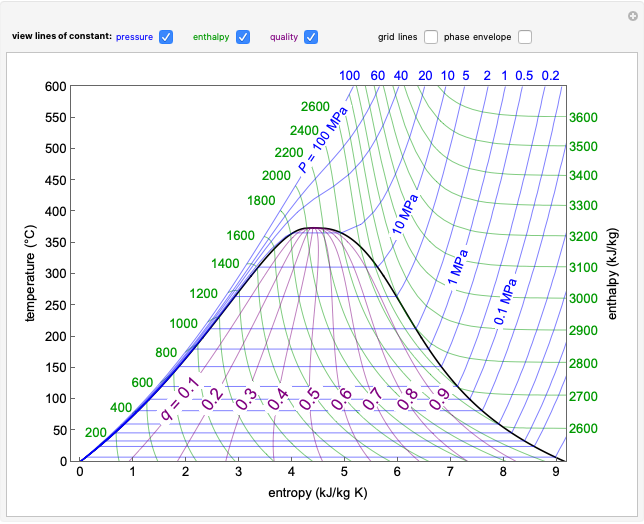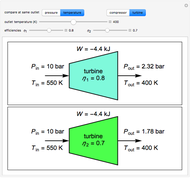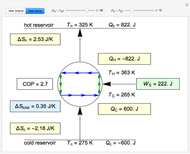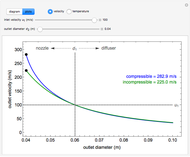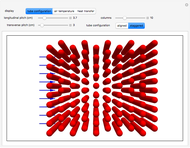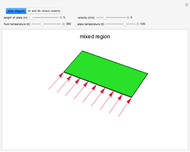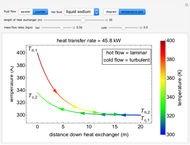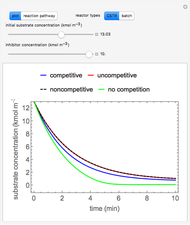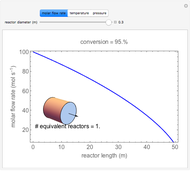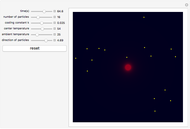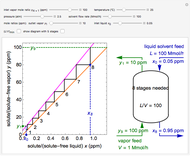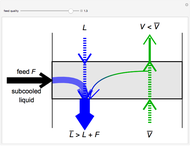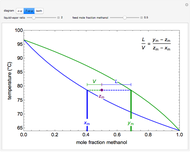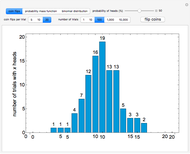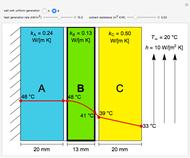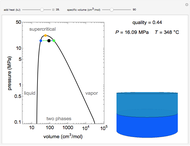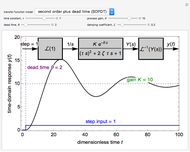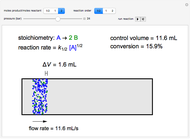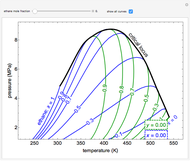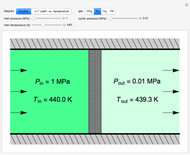Joule-Thomson Expansion

Requires a Wolfram Notebook System
Interact on desktop, mobile and cloud with the free Wolfram Player or other Wolfram Language products.
When a gas expands through an adiabatic throttle (often a porous plug), the temperature can change as a result of the Joule–Thomson effect. You can select one of four gases, and use sliders to adjust the inlet temperature, inlet pressure and outlet pressure. The intensity of the green color is proportional to the gas density, and the throttle is thicker for a larger pressure drop. Select "J-T coeff. vs. temperature" to see the Joule–Thomson coefficient plotted as a function of temperature.
Contributed by: Adam J. Johnston (August 2016)
Additional contributions by: John L. Falconer and Rachael L. Baumann
(University of Colorado Boulder, Department of Chemical and Biological Engineering)
Open content licensed under CC BY-NC-SA
Snapshots
Details
The energy balance for an adiabatic throttle implies that
 .
.
The throttle does no work, and because the gas moves so quickly through the throttle, it does not have much time to transfer heat to the surroundings.
The Joule–Thomson coefficient is derived by starting with the exact differential for enthalpy:
 .
.
Since  for a throttle, and the derivative of enthalpy
for a throttle, and the derivative of enthalpy  with respect to temperature
with respect to temperature  at constant pressure
at constant pressure  is the heat capacity
is the heat capacity  , then:
, then:
 .
.
Rearranging, and given that the enthalpy  is constant,
is constant,
 ,
,
where  , and
, and  is the Joule–Thomson coefficient.
is the Joule–Thomson coefficient.
Integration then relates the outlet temperature to the inlet temperature and the pressure drop:
 .
.
If  , the outlet temperature is lower than the inlet temperature. If
, the outlet temperature is lower than the inlet temperature. If  , then the outlet temperature is higher.
, then the outlet temperature is higher.
References
[1] J. R. Elliott and C. T. Lira, Introductory Chemical Engineering Thermodynamics (2nd ed.), Upper Saddle River, NJ: Prentice Hall, 2012 p. 236.
[2] "Thermophysical Properties of Fluid Systems." (Aug 11, 2016) webbook.nist.gov/chemistry/fluid.
Permanent Citation






